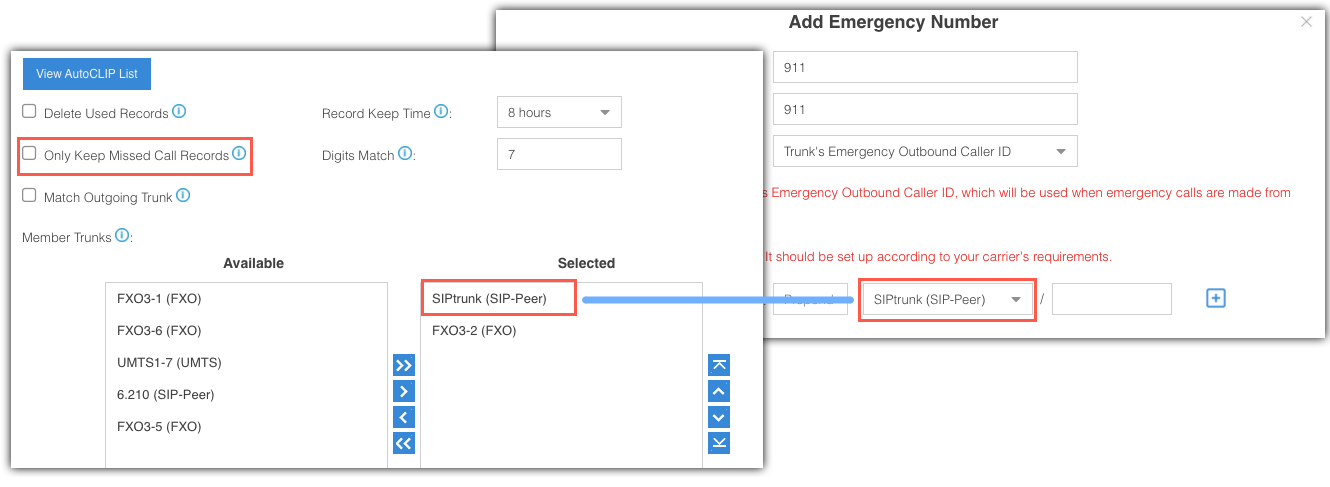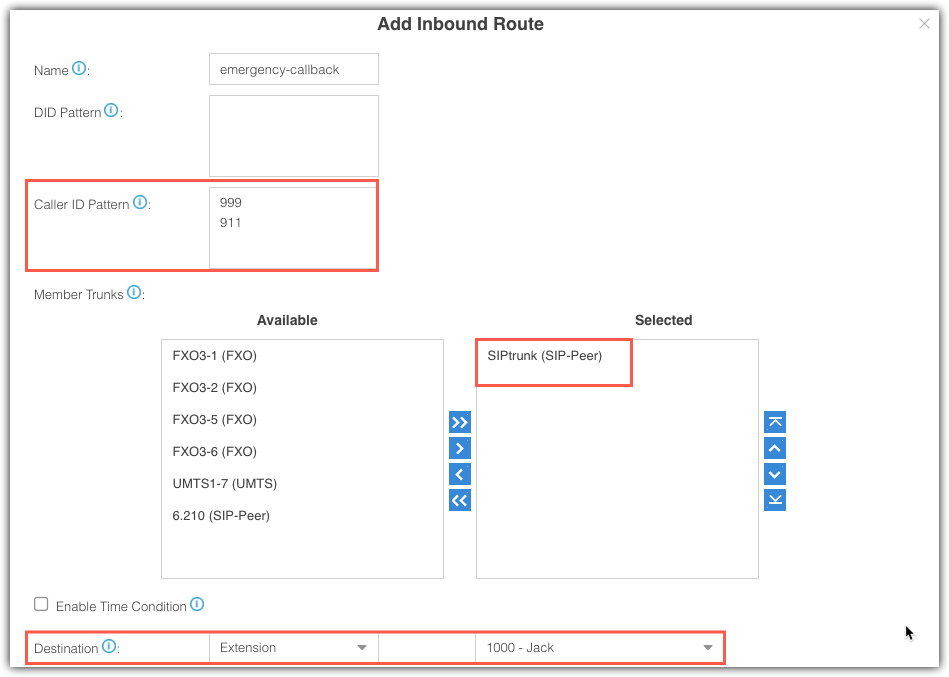Set up a Route for PSAP Callbacks
To ensure that a Public Safety Answering Point (PSAP) can call back to the emergency caller in case of call disconnection, you must set up an AutoCLIP route or an inbound route for PSAP callbacks.
Set up an AutoCLIP route for PSAP callbacks
An AutoCLIP route allows a PSAP operator to call the emergency caller back.
- Log in to the PBX web interface, go to .
- Unselect the checkbox of Only Keep Missed Call Records.Note: If this option is selected, PBX only keeps records for the calls that are not answered by the PSAP, and when the PSAP operator calls back, PBX cannot route the call directly to the emergency caller.
- Select the trunks that are used for emergency calls to the
Selected box.

- Leave other settings as default or change them according to your needs.
- Click Save and Apply.
When a user makes an emergency call through the selected trunk and loses connection during the call, the PSAP operator can call the emergency caller back.
Set up an inbound route for PSAP callbacks
In case that the emergency caller is not available to answer the returned call from PSAP, you can set up an inbound route to forward the call to an on-site security personnel.
- Log in to the PBX web interface, go to .
- Click Add to add an inbound route for PSAP callbacks.
- In the pop-up window, configure the following settings:
- In the Name field, specify a name to help you identify it.
- In the Caller ID Pattern, enter all the emergency
numbers that you have set on the PBX.Note: Press Enter key to separate numbers.
- In the Member Trunks field, select the trunks that are used for emergency calls to the Selected box.
- In the Destination field, select
Extension, and select the user who is
responsible for answering the returned calls from PSAP.

- Click Save and Apply.